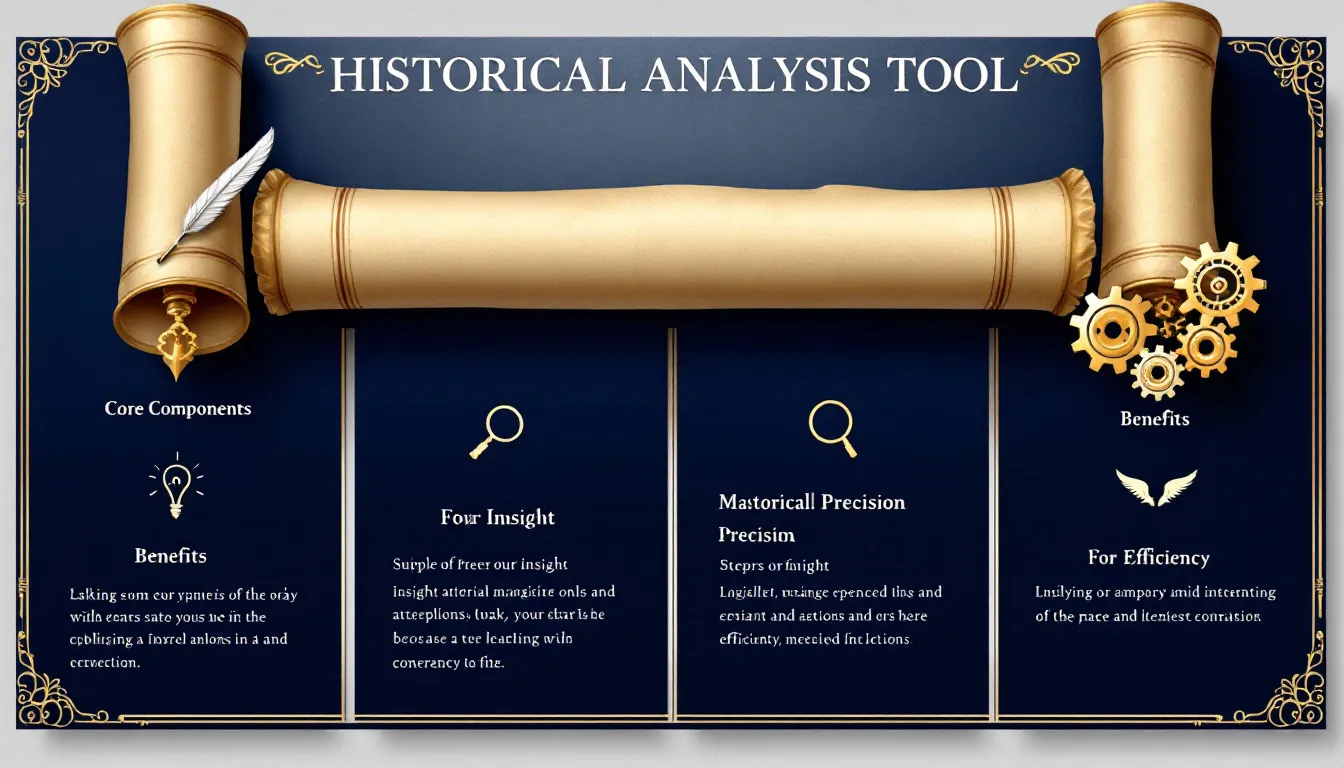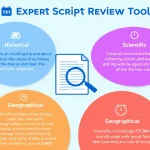Historical Analysis Tool
Is this tool helpful?
How to Use the Historical Analysis Tool Effectively
Use this tool to generate a detailed analysis of any historical event, period, or phenomenon by completing the simple form fields. Follow these steps for the best results:
- Historical Event, Period, or Phenomenon: Describe the subject you want to analyze with as much detail as possible. For example:
- The Harlem Renaissance
- The Fall of the Berlin Wall
- Time Frame (optional): Specify the dates or period related to your subject. You can use exact years or general ranges such as:
- 1920-1935
- Late 20th century
- Geographical Location (optional): Mention the place or region connected to your historical topic. Examples include:
- Harlem, New York
- East Germany
- Generate your analysis: Click the button to create a comprehensive multi-perspective examination based on your inputs.
What Is the Historical Analysis Tool?
The Historical Analysis Tool helps you produce in-depth research and understanding of historical events, periods, or phenomena. It breaks down complex history by examining political, social, economic, and cultural factors to reveal their interconnections and impacts.
With this tool, you can quickly explore cause-and-effect relationships, assess the lasting effects across different eras, and compare events to identify patterns or contradictions. It helps you present well-rounded perspectives, whether you’re a student, educator, or researcher.
Key Features of the Historical Analysis Tool
- Event Evaluation: Clearly identifies and contextualizes historical subjects.
- Multi-Perspective Insights: Assesses political, social, economic, and cultural dimensions.
- Cause and Effect: Explores relationships and consequences over time.
- Impact Assessment: Analyzes short-term and long-term historical impacts.
- Comparative Analysis: Supports side-by-side examination of related events or trends.
Practical Uses for Historical Research and Study
Academic Research and Writing
- Develop well-structured arguments for essays and dissertations.
- Identify significant patterns and connections in historical data.
- Create comprehensive outlines to organize research papers.
- Deepen your understanding of complex historical narratives.
Educational Tools and Curriculum Development
- Produce detailed lecture summaries and teaching materials.
- Design student assignments focused on critical historical analysis.
- Build comparative studies to highlight similarities and differences between events.
- Enhance lesson plans with multi-layered historical context.
Professional Historian Applications
- Prepare exhibition texts and descriptive materials for museums.
- Document cultural heritage with structured analytical frameworks.
- Plan policy research with historical insights to inform decisions.
- Support archival description with multi-faceted event evaluations.
How the Tool Solves Historical Research Challenges
Structured and Systematic Analysis
The tool simplifies historical research by organizing information clearly and systematically. It ensures you consider various perspectives and connect different historical factors without losing focus.
- Balances political, social, economic, and cultural viewpoints.
- Clarifies complex cause-and-effect chains over time.
- Helps you avoid oversimplifications or missing critical details.
- Improves your ability to synthesize information for clearer conclusions.
Example Analysis: The Great Depression
Input:
- Historical Event: The Great Depression
- Time Frame: 1929-1939
- Geographical Location: United States
The tool generates an analysis covering:
- Economic collapse triggers and their global impacts
- Social consequences including unemployment and poverty
- Government policies and reforms during the New Deal era
- Changes in industrial and agricultural sectors
- Long-term effects on financial systems and international trade
Additional Practical Applications and Use Cases
Research Projects
- Organize literature reviews with clear thematic divisions.
- Develop comprehensive timelines and event connections.
- Compare parallel historical events across different regions.
- Facilitate hypothesis testing with structured cause-effect analysis.
Teaching and Learning
- Create engaging discussion questions based on detailed analysis.
- Design assignments that foster critical thinking about history.
- Use for student research guidance and study aid material.
- Illustrate interdisciplinary links between history and other fields.
Professional History and Cultural Context
- Support exhibition narratives with depth and nuance.
- Document cultural heritage sites with historical significance.
- Inform cultural policy development based on past precedents.
- Maintain accuracy in historical preservation efforts.
Example of a Detailed Historical Analysis: The French Revolution
Input:
- Historical Event: The French Revolution
- Time Frame: 1789-1799
- Geographical Location: France
Generated analysis highlights:
- Social class tensions and pre-revolutionary conditions
- Key moments including the Storming of the Bastille and the Reign of Terror
- Political transformations toward republicanism
- Economic crises and reform attempts
- Cultural shifts in art, philosophy, and public opinion
- International reactions and wars sparked by the revolution
- Long-lasting impacts on Europe’s political landscape
Frequently Asked Questions about the Historical Analysis Tool
What types of historical topics can I analyze?
You can analyze any event, period, or phenomenon—including political revolutions, social movements, cultural shifts, economic changes, technological progress, and military conflicts.
How much detail should I include?
Basic descriptions work, but more specific details improve the depth and relevance of the analysis. Include clear time frames and locations whenever possible.
Can I analyze multiple related events?
Yes, you can enter interconnected events or extended historical periods to get a comprehensive overview that links those events.
How should I use the analysis results?
Use the results as a foundation for research papers, lectures, or general study. They provide organized insights that guide deeper investigation.
Is this tool suitable for comparative historical studies?
Absolutely. Generate multiple analyses to compare and contrast historical events or periods, helping you identify patterns and variations.
Can I use this tool for local history research?
Yes, it works well for local history by connecting small-scale events to broader historical contexts and showing their significance.
How can educators integrate this tool into teaching?
Teachers can create study guides, prepare lecture content, design assignments, and facilitate classroom discussions using the tool’s structured analyses.
What’s the best way to use the time frame input?
Specify the most relevant period for your analysis. You can include exact years, broader eras, or overlapping periods to frame the topic properly.
Can I analyze recent or contemporary events?
Yes. The tool supports analysis of modern events by situating them in historical context and highlighting possible long-term effects.
Important Disclaimer
The calculations, results, and content provided by our tools are not guaranteed to be accurate, complete, or reliable. Users are responsible for verifying and interpreting the results. Our content and tools may contain errors, biases, or inconsistencies. Do not enter personal data, sensitive information, or personally identifiable information in our web forms or tools. Such data entry violates our terms of service and may result in unauthorized disclosure to third parties. We reserve the right to save inputs and outputs from our tools for the purposes of error debugging, bias identification, and performance improvement. External companies providing AI models used in our tools may also save and process data in accordance with their own policies. By using our tools, you consent to this data collection and processing. We reserve the right to limit the usage of our tools based on current usability factors.







